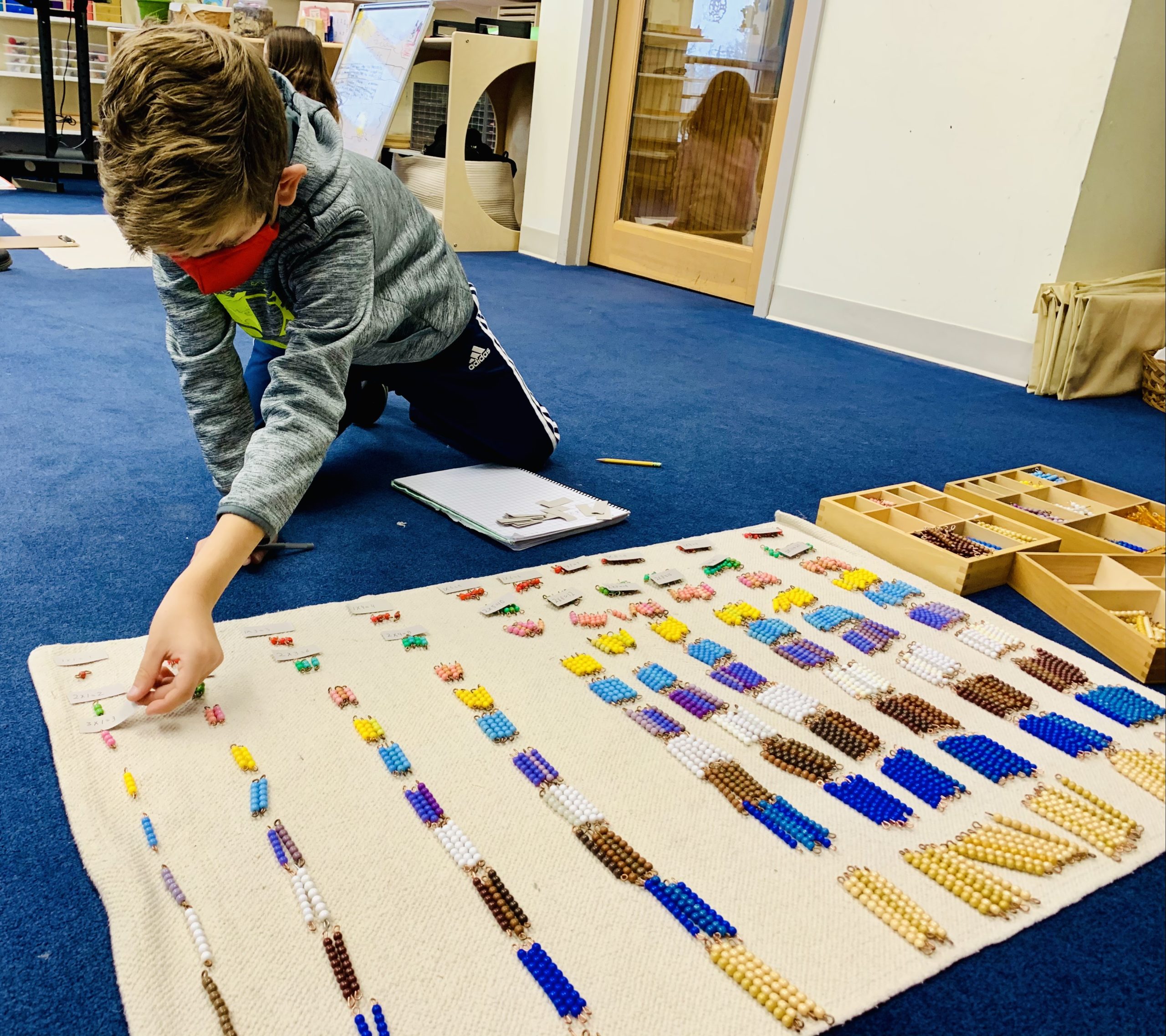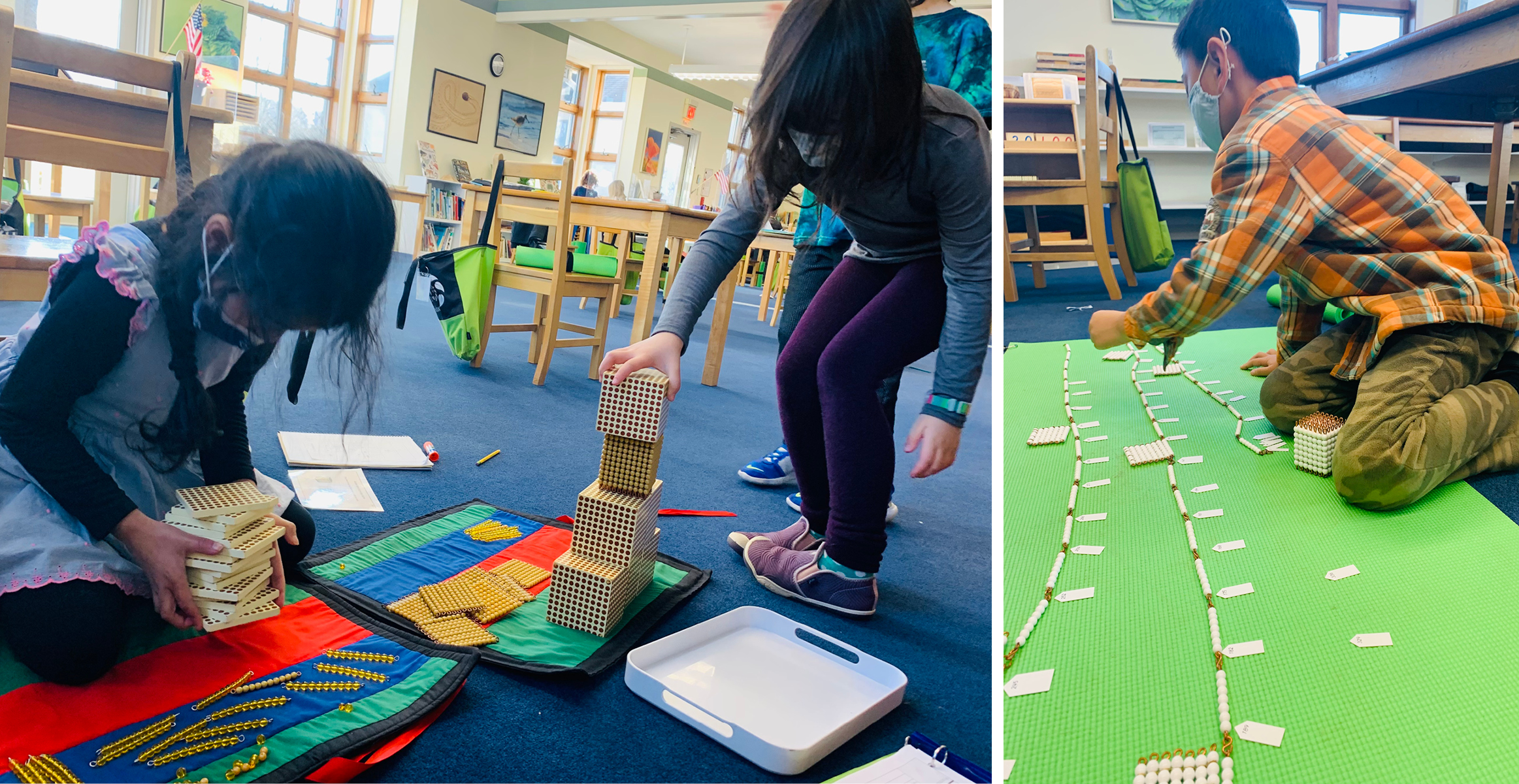
Developing Mathematical Thinkers
by Aish Saminathan, Lower Elementary Teacher
We, as humans, are quick to label. “She is athletic.” “He is artistic.” “They have a math brain.” “I’m not a number person.” Despite a growing number of evidence on the damaging effects of labeling children with a skill or lack thereof, we sometimes fall into the old practice. For math, the damage is deeper than we came to believe that some people are gifted with math brains and some are not. Such thinking is the reason for the prevalence of math anxiety, racial and gender stereotypes, and scores of underachieving students.
Every time we repeat this myth, we forget the immensely-complicated and ever-changing machinery that we have in our hands, or rather in our brains. Several studies have shown that neuroplasticity, or the dynamic way our 86-billion-celled brain changes with inputs, rewires our brain positively when we cultivate a growth mindset. As educators and parents, we have the immense power to help children build a growth mindset – to help them believe that efforts pay off, to guide them set learning goals and not achievement goals (“If I try harder and learn one-digit multiplication, I can learn to multiply bigger numbers.”).
But we all know someone in our family or a friend’s child who is quicker than others in solving equations or understanding mathematical concepts easily. Surely, that is innate? Jo Boaler, a Stanford math professor and a proponent of inquiry-based math learning, disagrees. In her book “Mathematical Mindsets,” she says that our societal perception of someone being “good at math” is determined not by a child’s tenacity and persistence to solve a problem but often by their speed of remembering math facts and algorithms. Our injection of ability brackets affects not only the students who are deemed as “non-math brains” but also those who are seen as gifted or talented. The label is a constant reminder for the children to strive for perfection and consequently, avoid making mistakes and constructive struggles.
This makes the work of a Montessori educator ever more important. There is a growing number of studies done on the futility of the drudgery we have all been subjected to as children – memorizing math facts. While math facts certainly come in handy in solving larger problems, it is the method of achieving memorization that accentuates math anxiety. There is an urgent and crucial need for educators and parents to de-emphasize rote memorization and encourage low-floor, high-ceiling math works to understand the way numbers work.
 One way to do this is to cultivate what Dr. Maria Montessori calls “a mathematical mind.” In her book, “Psychoarithmetic,” Dr. Montessori emphasizes the main driving forces of learning – interest and discovery. Math, she observes, is not a set of procedures to memorize; it is something to discover and perceive by the hand before being understood by the mind.
One way to do this is to cultivate what Dr. Maria Montessori calls “a mathematical mind.” In her book, “Psychoarithmetic,” Dr. Montessori emphasizes the main driving forces of learning – interest and discovery. Math, she observes, is not a set of procedures to memorize; it is something to discover and perceive by the hand before being understood by the mind.
The wide range of three-dimensional math manipulatives in a Montessori environment offers children the opportunity to engage in all parts of the brain, and not just working memory, when memorizing math facts. When we are asked a question like “What is 8 times 7?”, we answer ‘56’ because it’s very likely that through a number of repetitions in our young age, we transferred the memory of this answer from our prefrontal cortex to our hippocampus. Our learning, in most cases, happened with the same kinds of inputs – writing or saying it aloud repeatedly.
In Montessori such learning is a two-pronged approach. The child is first introduced to the process of arriving at the answer 8 times 7. When a child uses a material called the Bead Cabinet, which has rows of distinctly colored number chains, all four lobes of the brain get activated. First of all, as the child looks for the number tickets to align with the number of beads on the chain, she engages her occipital region (visual). As the child reads the numbers, it activates her temporal (auditory) even as the cross-modal integration of sensory cues obtained through manipulating the material to make squares and cubes activates the parietal. Once the material is laid out, the child sees a pattern, which is crucial for cognition, resulting in the engagement of her frontal lobes. When the child understands the process, after working with a combination of other materials, she is encouraged to use the Multiplication Charts to deepen the memorization. At a psychological level, the materials encourage children to learn a concept with a sense of purpose and agency.
Yet, working with materials takes time. It involves elaborate setup, order, orientation and long hours of exploration. And the end result is usually not quantifiable as a worksheet replete with numbers. With math, like learning any new skill, speed does not equate to intelligence. Lauren Schwartz, a French mathematician, talks about speed in his autobiography, “A Mathematician Grappling with Century:” “I was always deeply uncertain about my own intellectual capacity; I thought I was unintelligent. And it is true that I was, and still am, slow. I need time to seize things because I always need to understand them fully.”
At a time when the world is demanding faster and further math skills from students, let us remind ourselves and our children that mathematics is not a race. It is, as Oscar Veblen, a renowned American mathematician, eloquently puts it “one of the most essential emanations of the human spirit, a thing to be valued in and for itself, like art or poetry.”